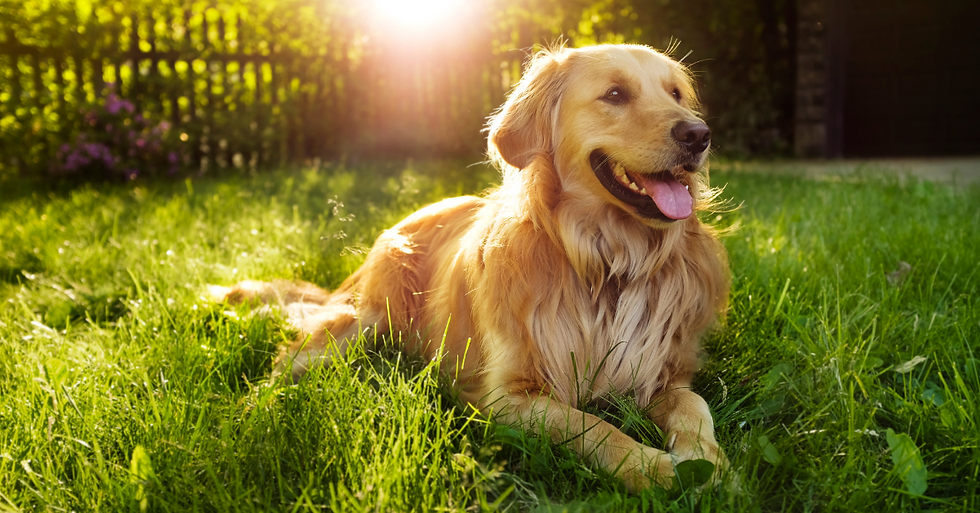Breed Spotlight: Golden Retriever
- Scarlett Bowman

- Oct 1, 2021
- 3 min read

About
The Golden Retriever, an exuberant Scottish gundog of great beauty, stands among America’s most popular dog breeds. They are serious workers at hunting and field work, as guides for the blind, and in search-and-rescue, enjoy obedience and other competitive events, and have an endearing love of life when not at work.
The Golden Retriever is a sturdy, muscular dog of medium size, famous for the dense, lustrous coat of gold that gives the breed its name. The broad head, with its friendly and intelligent eyes, short ears, and straight muzzle, is a breed hallmark. In motion, Goldens move with a smooth, powerful gait, and the feathery tail is carried, as breed fanciers say, with a “merry action.”
Goldens are outgoing, trustworthy, and eager-to-please family dogs, and relatively easy to train. They take a joyous and playful approach to life and maintain this puppyish behavior into adulthood. These energetic, powerful gundogs enjoy outdoor play. For a breed built to retrieve waterfowl for hours on end, swimming and fetching are natural pastimes.
History
The most important name in the early history of the Golden Retriever is Dudley Marjoribanks, the first Lord Tweedmouth, who developed the breed in the Scottish Highlands during the reign of Victoria. For the 50 years between 1840 and 1890, Tweedmouth kept scrupulous records of breedings effected to create an ideal gundog for use at his Guisachan estate in the Highlands, Inverness-shire, Scotland. Tweedmouth wanted a dog suited to the rainy climate and rugged terrain of the area, so he crossed his “Yellow Retriever” with a breed that is now extinct, the Tweed Water Spaniel. Irish Setter and Bloodhound were also added to the mix.
Care
A high-quality dog food appropriate for the dog’s age (puppy, adult, or senior) will have all the nutrients the breed needs. Some Goldens can become overweight, so watch your dog’s calorie consumption and weight level. If you choose to give your dog treats, do so in moderation. Treats can be an important aid in training, but giving too many can cause obesity. Give table scraps sparingly, if at all, especially avoiding cooked bones and foods with high fat content. Learn about which human foods are safe for dogs, and which are not. Check with your vet if you have any concerns about your dog’s weight or diet.
Grooming
Goldens heavily shed their thick, water-repellant double coat once or twice a year, and they also shed more moderately on a continuous basis. Most of the time, a good brushing-out with a slicker brush once or twice a week will remove much of the dead hair before it has a chance to fall onto the furniture. During times of heavy shedding, these brushing sessions turn into daily affairs. Baths help to loosen the dead hairs, but the dog must be completely dry before brushing begins. Otherwise, Goldens only need occasional baths to keep them clean. As with all breeds, the Golden’s nails should be trimmed regularly.
Training
As with all breeds, early socialization and puppy training classes are recommended. Gently exposing the puppy to a wide variety of people, places, and situations between the ages of seven weeks and four months will help the Golden develop into a well-adjusted, well-mannered adult. Puppy training classes serve as part of the socialization process and help the owner learn to recognize and correct any bad habits that may be developing. Obedience training strengthens the bond between dog and owner—a Golden wants nothing more than to please his human. Golden Retrievers are outgoing, loyal, and eager to do your bidding, which makes them very easy to train.
Sources






Comments